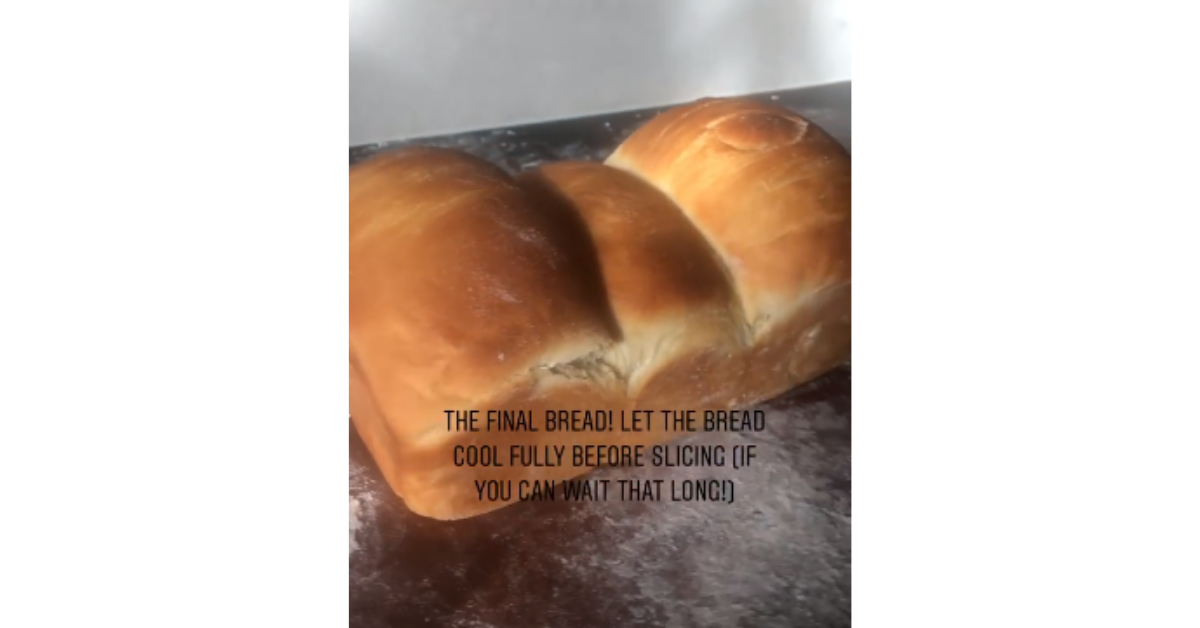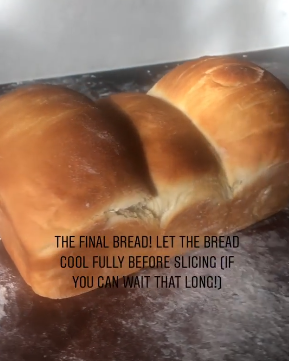Today we’re going to be expanding our culinary horizons by baking some deliciously soft and pillowy vegan milk bread. I hope you’ve got your oven mitt and pastry brush at the ready because this is a seriously fun and simple way to earn some bread-making credentials. I’d also like to thank marystestkitchen.com for this recipe.
What can I expect from this Easy Vegan Milk Bread?
There are 3 main components to this recipe – a roux, then the dough and finally, a glaze. I’ve broken down each step to make this recipe simple and really quite fun! Don’t forget you can watch me bake this over on our Instagram stories if you’re stuck with any step! In addition to perfecting a classic roux, I’ll also be showing you how to knead dough like a pro and outlining my simple trick to heat milk to right temperature (blood or body temperature) when it comes to combining it with the yeast and sugar. If you’d like to perfect your roux, it also features in our Vegetable Moussaka in addition our Kids’ Vegan Creamy and Herby Pie as part of our nostalgic Kids’ School Meals week!
Similarly, if you’ve enjoyed all that entails making and kneading dough, then we’ve got such a wide array of sweet and savoury dough-based treats! Why not take a sneak peek at the following vegan recipes:
- Easy Potato Gnocchi
- Vegan Cookies
- 5 A Day Pizza
- Vegan French Apple Tart
- Flourless Aubergine Croquettes
- Coffee & Chocolate Shortbread
You can find the rest of our recipes here that range from mesmerizing main meals, scrumptious sides, and snacks, and delicious desserts! If you’re struggling with any step, then be sure to check out our video guides over on our Instagram page too!
I hope you’re ready to make such a pillowy and scrumptious treat! Let’s get baking!
Easy Vegan Milk Bread
Equipment
- Saucepan
- Whisk
- oven
- Large Mixing Bowl
- Rolling Pin
- 900G/2Lb Loaf Tin
- Tea Towel
- Pastry Brush
Ingredients
For the Roux
- 40 g Plain Flour
- 200 ml Soy Milk or any Plant-Based Milk
For the Dough
- 120 ml Soy Milk or any Plant-Based Milk
- 7 g Yeast Fast Action
- 55 g Granulated Sugar plus 1 tsp
- 1 tsp Salt
- 1 Egg Alternative 3 tbsp Aquafaba
- 275g Plain Flour Bread Flour
- 30 g Margarine or Vegan Butter
For the Glaze
- 1 tbsp Maple Syrup
- 1 tbsp Water
Instructions
For the Dough
- Combine the flour and milk in a small saucepan over a low heat.
- Whisk the milk and flour continuously for 1-2 minutes until it reaches a porridge-like consistency.
- Take the roux off the heat after about 1 minute, or until it reaches a porridge-like consistency. As the roux cools, it will begin to thicken. If you’d like to be really specific (and happen to have a cooking thermometer to hand) the ideal temperature is 65°C.
- Next, heat the milk in the microwave to body temperature (sometimes called blood temperature). To get this right, I suggest that you under-heat the milk at first and slowly reheat build up the temperature. To test for body temperature, just stick one (clean!) finger into the mildly heated milk. You’ll know if it’s body temperature if you don’t feel the milk on your finger. If too hot or too cold, you’ll be able to feel it but at body temperature it should feel like there’s nothing there!
- If you’ve microwaved the milk for too long, simply allow the milk to cool until it passes the body temperature test. Ensure you keep your hands clean throughout this process.
- Once the desired temperature has been reached, add the yeast and one teaspoon of sugar. The milk needs to be at body temperature to not kill off the yeast and ensure a proper rise. The sugar, on the other hand, is a food source for the yeast.
- Whisk the yeast, milk and sugar well and let the mixture sit for 5-10 minutes, or until it starts to bubble and slightly froth. The yeast has now been activated.
- In a large bowl, combine the cooled roux to the yeast mixture. Stir well.
- Add the egg replacer, remaining sugar, and salt. Whisk until smooth.
- Now pour in about ⅓ of the flour and mix together. Keep add the flour in stages and stir until you run out of flour and the dough is fully combined.
- Lightly dust a work surface with some bread flour and turn out the dough.
- Start kneading the dough. Make sure you sprinkle enough flour on both the dough and surface to prevent it from sticking.
- Use one hand to hold onto the bottom of the dough and use the palm of your other hand to tear the top the dough away from you in one movement. Now fold that section into the middle of the dough. Give the dough a ¼ turn and continue tearing and folding for about 2-3 minutes or until the dough is completely smooth.
- If the dough is too sticky, you can keep adding flour in small quantities. NOTE: It’s better for the dough to be slightly too sticky than to become too dry so be careful when adding in extra flour.
- Once a smooth dough is achieved, let the dough rest for 10 minutes.
- You can now incorporate the margarine by pressing it into the dough and kneading. You will need to add more flour as this becomes quite sticky. Remember, it is still better to have a sticky dough than a dry one. Knead for about 4-5 minutes or until the margarine is fully incorporated and the dough is smooth.
- Lightly grease a large bowl with vegetable oil.
- Place the dough in the bowl and cover with a tea towel. Leave in a warm place to rise for an hour. This process is called proving! The dough should roughly double in size.
- Press the dough out lightly into a rectangle, taking care not to press out too much air.
- Cut the dough roughly into thirds.
- Use a rolling pin to roll out each ⅓ into a long rectangular shape (about 25cm long). From the short end, roll up each ⅓ into a spiral.
- Grease a 2L loaf tin with some margarine.
- Place each spiral of dough into the tin, with the seam facing down. Space them evenly apart.
- Cover the dough with a tea towel and leave to rise (prove) in a warm place for 30 minutes.
- Combine the maple syrup and 1 tbsp of water in a bowl for the glaze.
- Once the dough has risen, pre-heat the oven to 175°C/350F.
- Using a pastry brush, or similar, brush the dough lightly with the glaze.
- Place in the oven for 20-24 minutes, or until golden brown.
- Allow the dough to cool before slicing.
- Enjoy your perfectly pillowy and deliciously soft bread!


